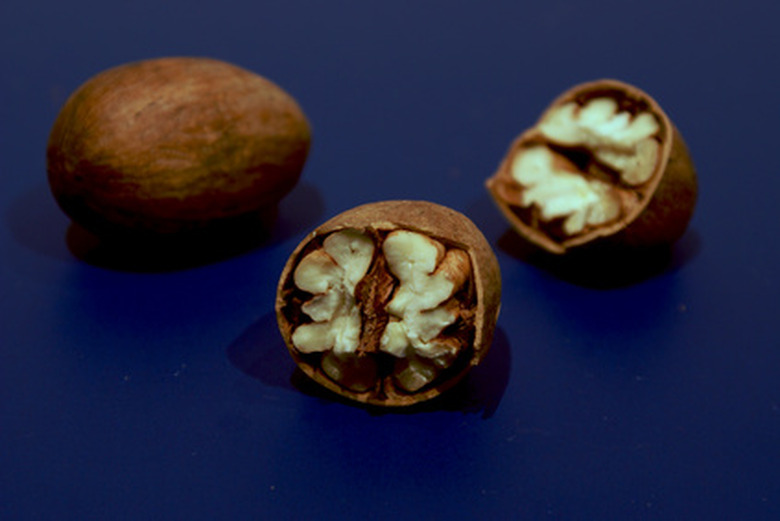The Difference Between A Male & Female Pecan Tree
According to the University of Florida, the pecan tree is native to the Mississippi floodplain in North America. Pecan trees are monoecious, which means the tree produces both male and female flowers for reproduction.
Male Flowers
Male flowers on the pecan tree, or catkins, produce pollen, which is essential for female flowers to produce pecan nuts. According to the University of Florida, cross-pollination between pecan trees increases maximum productivity.
Female Flowers
Spikes along the shoot of the tree identify female flowers. According to the New Mexico State University website, the female flower, or pistil, develops the pecan nut within seven months of the growing season if properly pollinated from the male flower.
Importance
Understanding the difference between male and female flowers is important for maximum productivity. According to the Oklahoma State University website, pollen shedding and pistil reproductively occurs at separate times. Therefore, cross-pollination between pecan trees is essential for reproduction.
- According to the University of Florida, the pecan tree is native to the Mississippi floodplain in North America.
- According to the New Mexico State University website, the female flower, or pistil, develops the pecan nut within seven months of the growing season if properly pollinated from the male flower.
Pecan Tree Care
Most pecan varieties need long a long growing season of 270 to 290 frost-free days to produce a good crop of nuts. They don't tolerate salty soil. Pecan trees grow in U.S. Department of Agriculture plant hardiness zones 6 through 9. When rainfall is scarce, water pecan trees deeply and thoroughly about ever other week. For each 1 inch of diameter, give the tree 3 or 4 pounds of 13-13-13 fertilizer. Spread it evenly over the root zone. Pecan trees need little pruning other than heading back overly vigorous side branches. Black aphids cause yellow, angular spots on the leaves and premature leaf drop. Narrow-range oil is the usual treatment for aphids, but spraying a mature pecan tree is likely more than you can manage. You can use a long, sturdy pole to strike the branches or a pole with a hook on the end to shake them. Nuts left on the ground become infested with mold and insects, so gather them quickly.
- Most pecan varieties need long a long growing season of 270 to 290 frost-free days to produce a good crop of nuts.
- Pecan trees need little pruning other than heading back overly vigorous side branches.
References
- New Mexico State University: Flowering Habits of Pecan Trees
- Oklahoma State University: Pecan Management, Botany
- All About Growing Fruits, Berries & Nuts; Barbara Ferguson, Editor
- Mississippi State University Extension Service: Caring for Pecan Trees in the Landscape
- University of California Department of Agriculture and Natural Resources: Harvesting and Storing Your Home Orchard Nut Crop
- University of California Statewide Integrated Pest Management Program: How to Manage Pests: Pecan
- University of Arkansas Cooperative Extension Service: Pecan Trees
